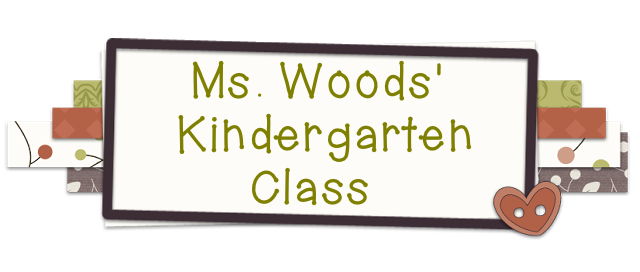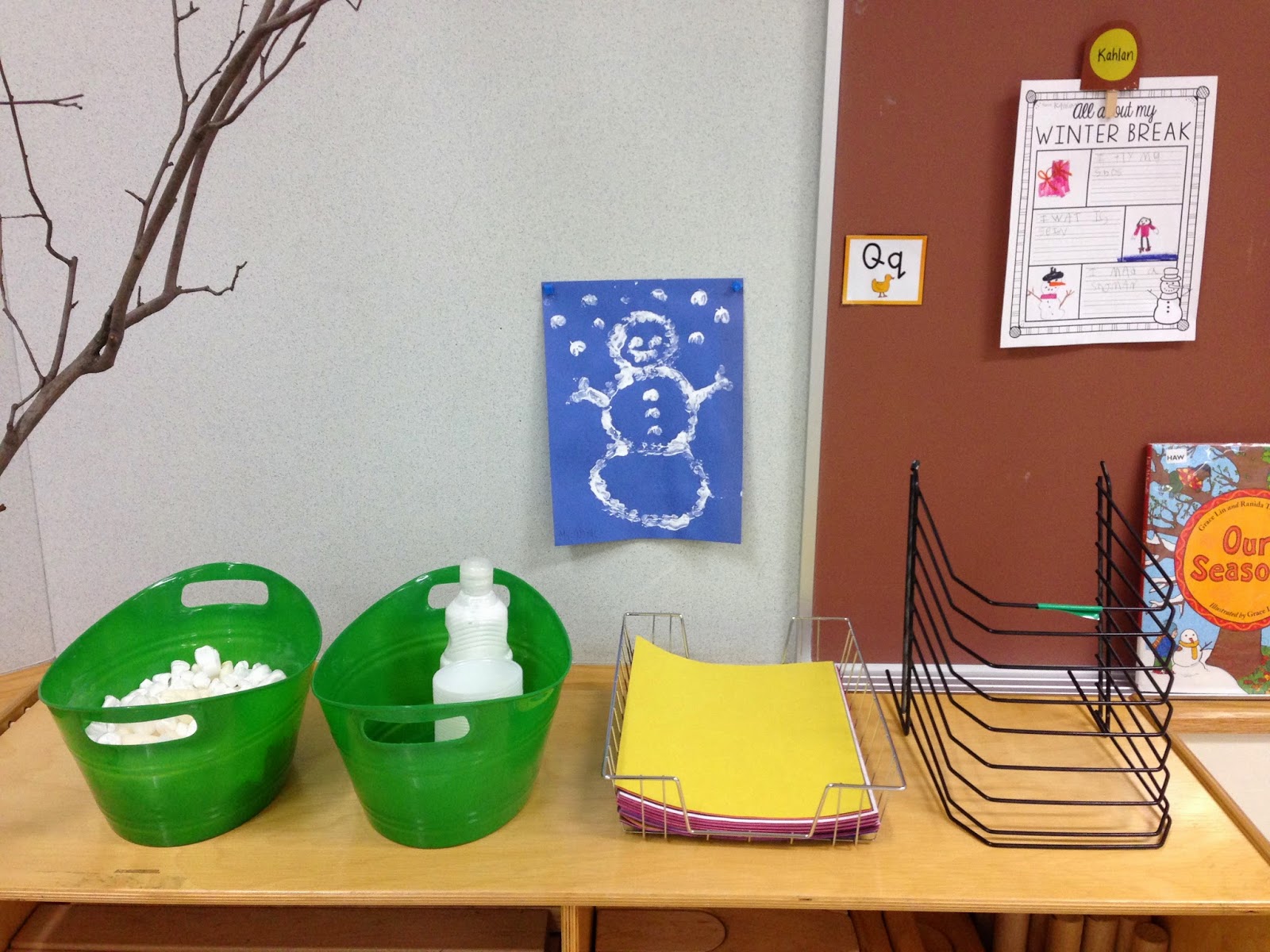Much of the country, including our school district, is beginning to incorporate new science standards (benchmarks for learning in each grade level), called the
Next Generation Science Standards. These new standards ask kids to do lots of hands-on, inquiry-based science and engineering, even in kindergarten! So we are beginning a new way of studying science in our class this year. We started with a big essential question, which is "What happens in winter?" We'll then rotate between four learning stations in order to find answers to this big question. Below are details on each of the four science stations we'll be doing: Research, Engineer, Create, and Investigate.
 |
| Some of our initial ideas on what happens in winter |
Research
Part of thinking like a scientist is learning to use resources to find information. At this station, kids choose from a big pile of non-fiction books on all kinds of topics. They find a book they are interested in, and then find a cozy spot to read it. When they're done, they have the option of choosing another book to read and learn from, or to cut out a "circle map," which they glue into their science journals and record pictures or words that describe what they learned in their book. Later in the year, I plan to open up this research to include tablets and computer, so students can investigate more topics they are interested in and won't be limited to just the books I put out.
Engineer
Engineering is also part of the Next Generation Science Standards. We watched a video produced by NASA for Kids about what engineers do, and we learned that they start with a problem, and make a plan to solve the problem. To simulate making a plan and carrying it out, I provided pattern block templates. Students choose the template they want, and find the right pieces to match the shapes. I will slowly reveal more and more complex building projects at this station, including giving students the ability to make their own plan and put it into action.
Create
Another part of thinking like a scientist is learning to use the creative side of your brain. Art projects help students practice creativity, problem-solving, and fine motor skills. For our first week at the Create station, we'll be dipping Styrofoam peanuts into white paint to make snow scenes.
Investigate
The last station is the investigation part of science! This will be a teacher-guided station involving lots of different hands-on science investigations. Since we are studying what happens in winter, we started off learning the story of snow. We read this book:
which taught us all about how snow crystals are made. We then went outside to find some snow crystals ourselves, and see what we could see.
For our investigation, we learned that scientists always start with a question. The question this week was "What kind of snow should Olaf stay away from?" (It never hurts to incorporate some Frozen references into every day learning :) ). So we went out and gathered three scoops of snow, and added different elements to them to see what would happen.
We made a prediction about which cup would melt the fastest:
And sure enough, it was the snow with warm water that melted the fastest! So a note to Olaf the snowman: stay away from warm water.
For more information on the new science standards, click
here and
here. And you're welcome to stop by during our science period at any time!

































